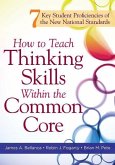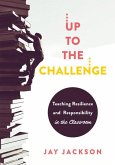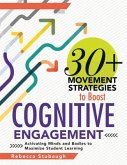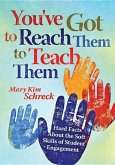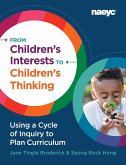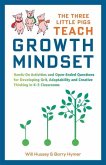Ensure your students develop the complex, higher-order thinking skills they need to not just survive but thrive in a 21st century world. The latest edition of this best-selling guide by James A. Bellanca, Robin J. Fogarty, and Brian M. Pete details a three-phase teaching model and dives deep into how to teach seven key student proficiencies: critical thinking, creative thinking, complex thinking, comprehensive thinking, collaborative thinking, communicative thinking, and cognitive transfer. How to teach higher-order thinking skills for student engagement and achievement: * Receive guidance on teaching higher-order thinking skills according to any given standard, including state standards and content-area standards. * Learn how to weave thinking skills and technology into your existing teaching strategies and lesson plans. * Understand how to adapt lessons for various grade levels and subjects. * Gain questions to reflect on after lessons, to ensure that students learn at the highest levels and grow their problem solving and innovative thinking. * Attain tools and reproducibles to facilitate learning and understanding of teaching critical thinking and other 21st century skills. Contents: Acknowledgments Table of Contents About the Authors Introduction Student Proficiency 1: Critical Thinking Chapter 1: Analyze Chapter 2: Evaluate Chapter 3: Problem Solve Student Proficiency 2: Creative Thinking Chapter 4: Generate Chapter 5: Associate Chapter 6: Hypothesize Student Proficiency 3: Complex Thinking Chapter 7: Clarify Chapter 8: Interpret Chapter 9: Determine Student Proficiency 4: Comprehensive Thinking Chapter 10: Understand Chapter 11: Infer Chapter 12: Compare and Contrast Student Proficiency 5: Collaborative Thinking Chapter 13: Explain Chapter 14: Develop Chapter 15: Decide Student Proficiency 6: Communicative Thinking Chapter 16: Reason Chapter 17: Connect Chapter 18: Represent Student Proficiency 7: Cognitive Transfer Chapter 19: Synthesize Chapter 20: Generalize Chapter 21: Apply Appendix A Appendix B Appendix C Appendix D Glossary References & Resources Index
Hinweis: Dieser Artikel kann nur an eine deutsche Lieferadresse ausgeliefert werden.
Hinweis: Dieser Artikel kann nur an eine deutsche Lieferadresse ausgeliefert werden.


